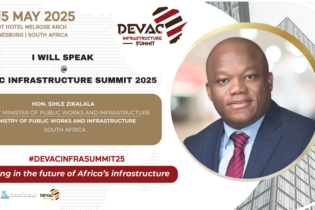The theme for Gauteng’s 2014 October Transport Month Campaign is ‘Transport, Moving the Economy Forward.
Ismail Vadi, MEC for Roads and Transport says, “During this campaign we will focus on the road freight and the rail transport segments as contributors to economic development. We will examine public transport initiatives on the African continent and promote non-motorised transport initiatives in our province. “We will implement the provincial freight strategy with greater vigour and renewed energy. Existing freight and logistics hubs such as the City Deep Terminal are being upgraded. In addition, a number of new logistics hubs are being planned, particularly to stimulate the local economies in the West Rand and in Sedibeng.” “We believe that the transport sector is a significant enabler for economic growth and social development, and in our province we must promote continued and sustained investments by government and the private sector across the various modes of transport, namely, non-motorised transport, road, rail and aviation. Freight Sector “The freight sector is to be the focal point of our campaign and the National Development Plan (NDP)recognizes that South Africa’s economy is a transport-intensive economy. However, its advantages in terms of natural resources are greatly eroded by the high transport costs and poor freight transport infrastructure. Most of the bulk freight in the country is transported on the existing national roads, and to a much lesser extent, on Transnet’s rail network. Ideally, bulk goods and services should be transport on the rail network and not on our roads. “The NDP envisages a strengthened and more developed Gauteng-Durban freight corridor. A critical success factor for a well-functioning freight corridor is unrestricted access to the terminals for freight, thereby removing bottlenecks on the road and rail routes, and expanding terminal capacity. Our five year plan is to provide effective freight access to major decentralized freight terminals on the northern and eastern periphery of the urban core of the Gauteng city-region by:• Decreasing the heavy freight vehicles numbers in core urban areas and central business districts
• Providing adequate linkages outside the province (i.e. Gauteng – KZN Corridor)
• Supporting infrastructure to freight intermodal facilities
• Aligning freight intermodal facilities with Transnet’s Container Strategy for Gauteng and Durban port developments.
“It is against this background that our Department; SANRAL, Transnet and the City of Johannesburg have invested in the further development of City Deep Terminal. This terminal is the largest inland port in our country. It handles 84 percent of all container freight on the Reef and most of what is bound for the SADC countries.
“City Deep is prioritized for improvements and upgrading so that it can better handle increased demand before it reaches its full capacity over the next few years. The upgrading of the road network is aimed specifically at improving access and mobility in and around the City Deep Terminal. “Together with the City of Johannesburg, we are investing R121 million on the road improvements that span seven inter-related projects which include the widening of Rosherville Road; the construction of the Cleveland Road bridge; the construction of ramps onto the N17, and extensions to Houer Road and Vickers Road. Already, the conversion of Rosherville Road into a one- way road has been completed. “On its part, Transnet is investing over R2.7 billion on upgrading the Terminal itself. Rubber Tyre Gantries have been introduced in this Terminal and a modern inland container terminal has been developed with an operational capacity of 400 000 TEUs per annum. The Kascon Terminal will be upgraded to 200 000 TEUs by 2016. “It is hoped that these improvements will provide the opportunity to retain and to establish new light industrial development and office parks around these terminals. This will further create the opportunity for retailers to build and retain their distribution centres at the freight terminals from where final distribution will take place. “For Transnet, the City Deep development is critical to achieve volume growth before the development of “super terminals”. Here I must emphasise that the current work that is being done to improve the situation and to expand capacity cannot be done by government alone. Business must also contribute by building appropriate holding facilities for their vehicles and staff. It is only through our combined efforts that we can achieve optimal utilisation of the City Deep Terminal. The private sector (user) must also show commitment by investing and ensuring long term sustainability in our freight infrastructure.”







